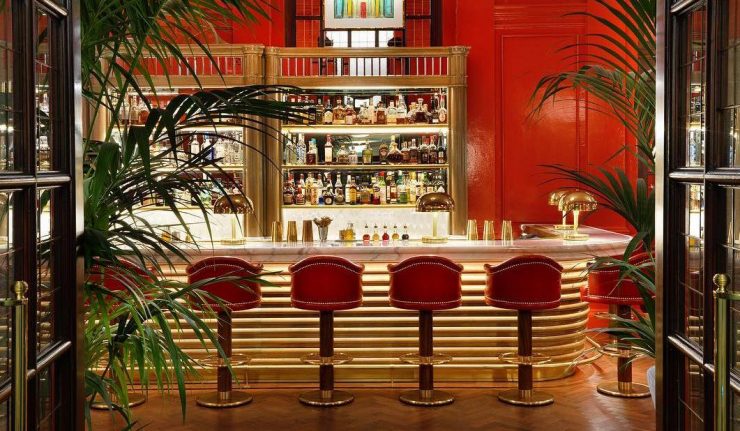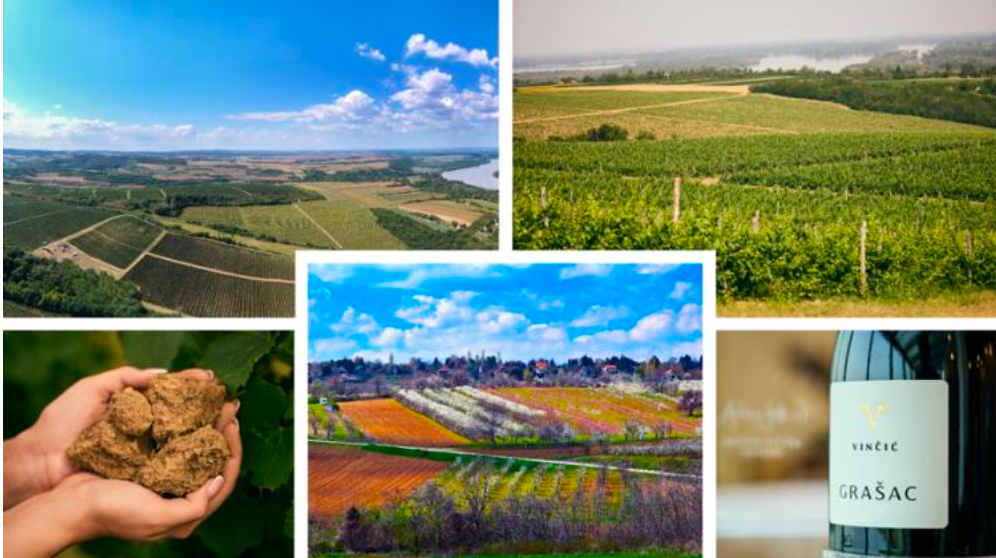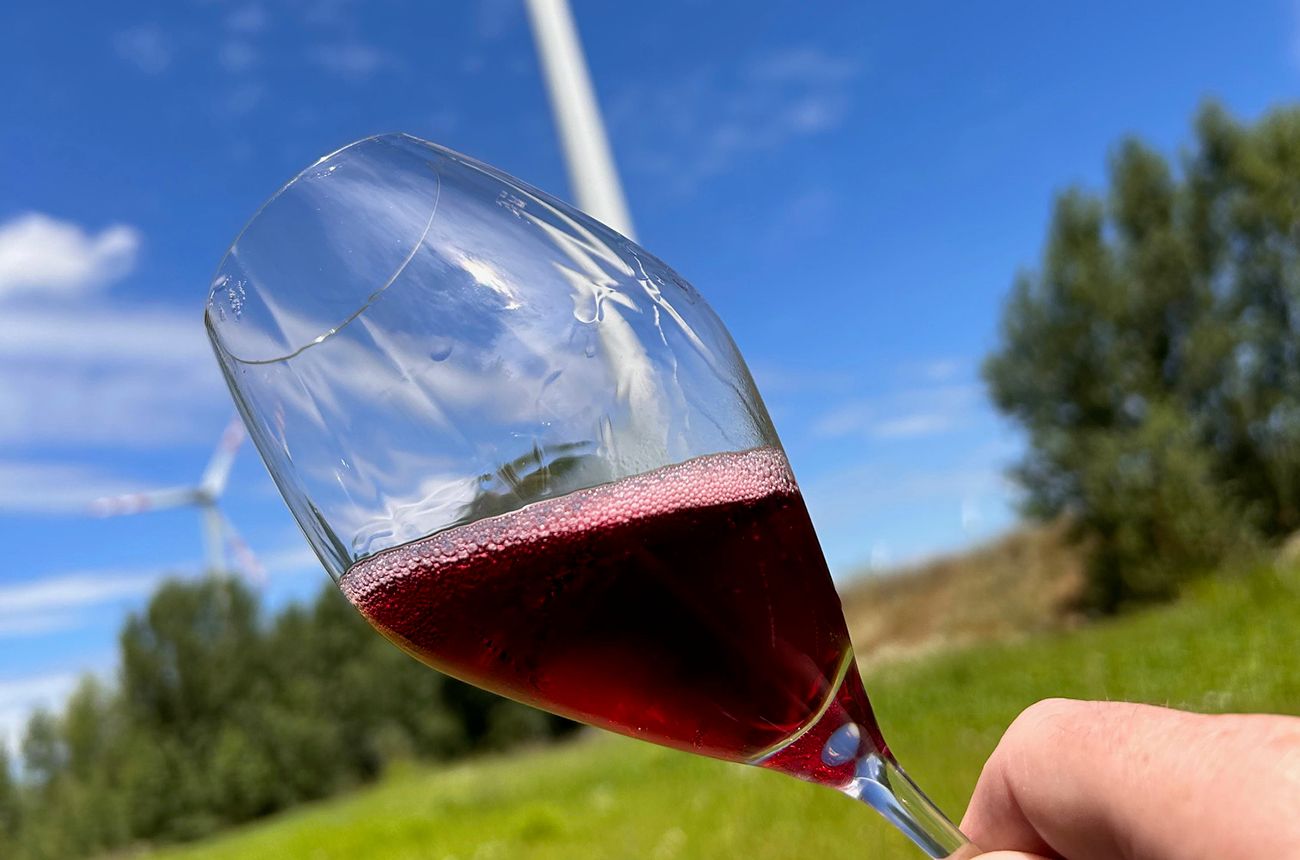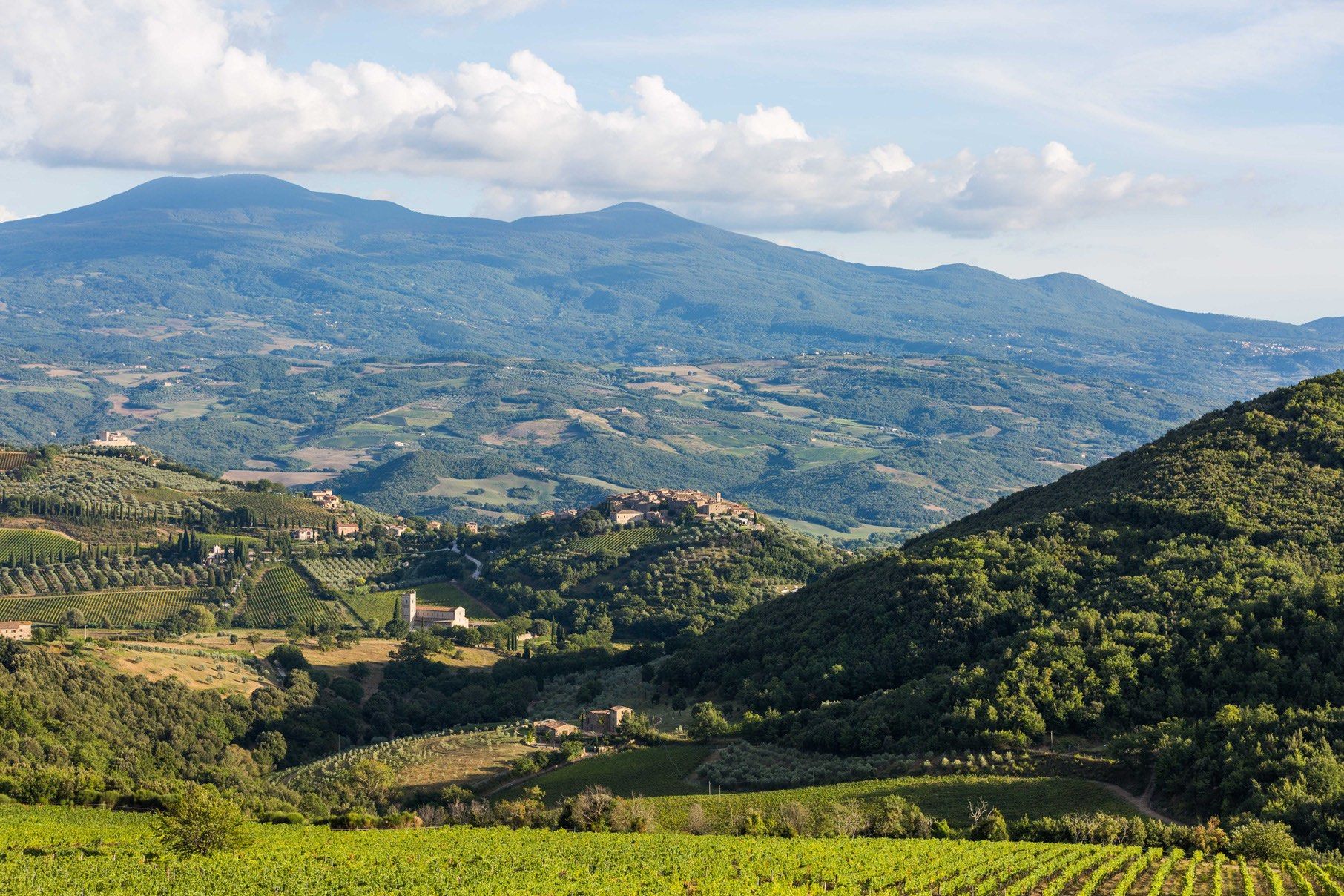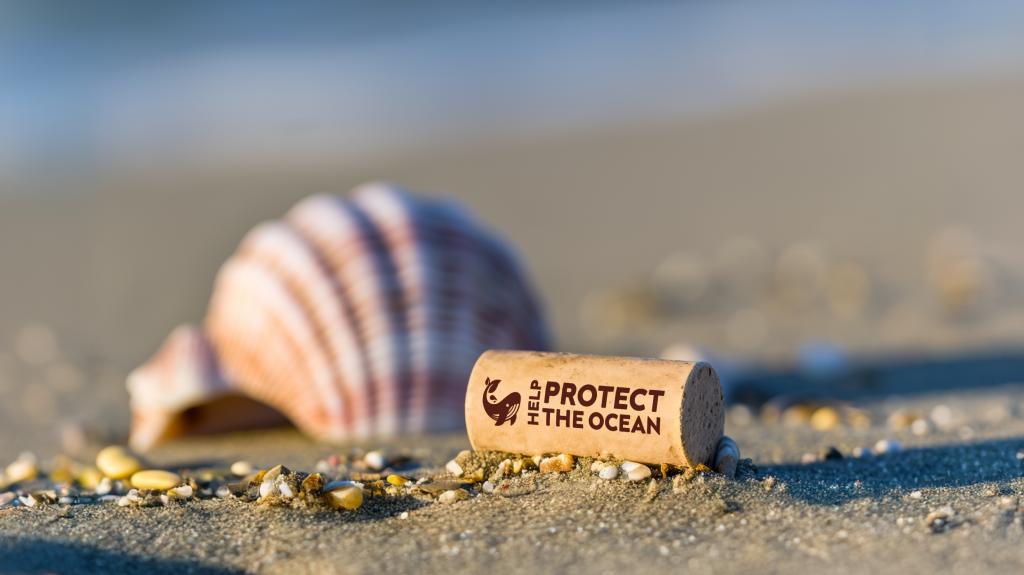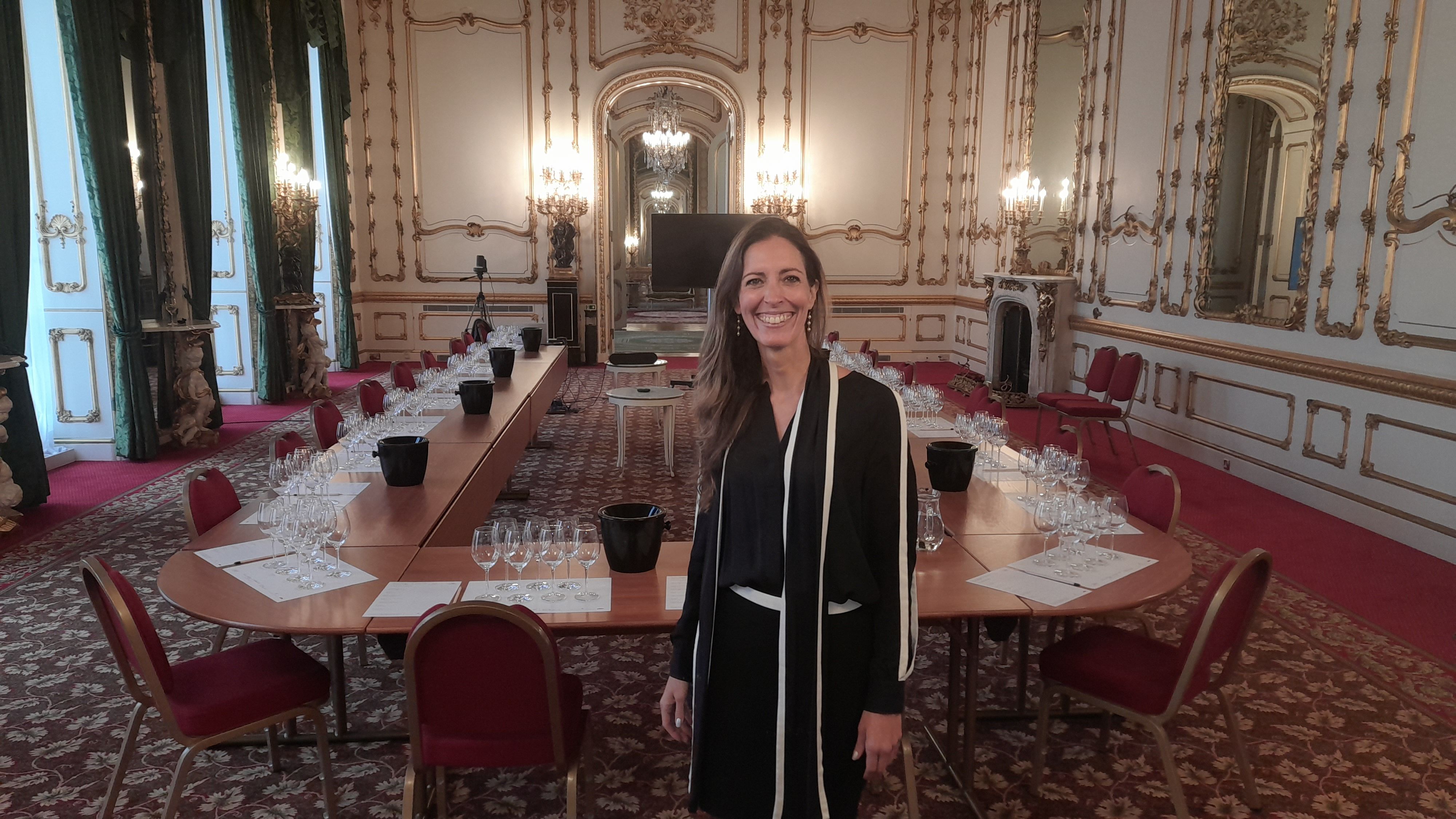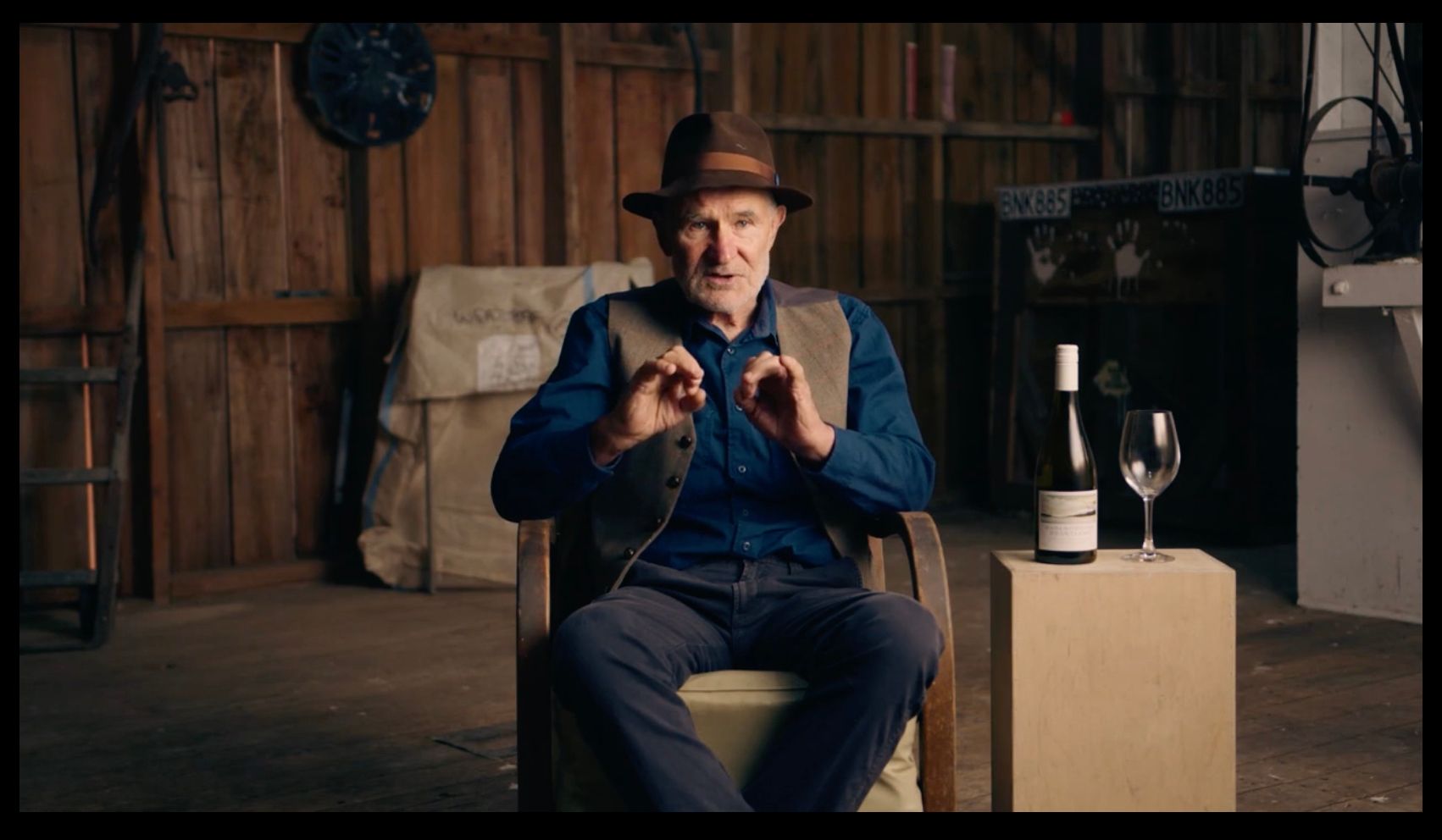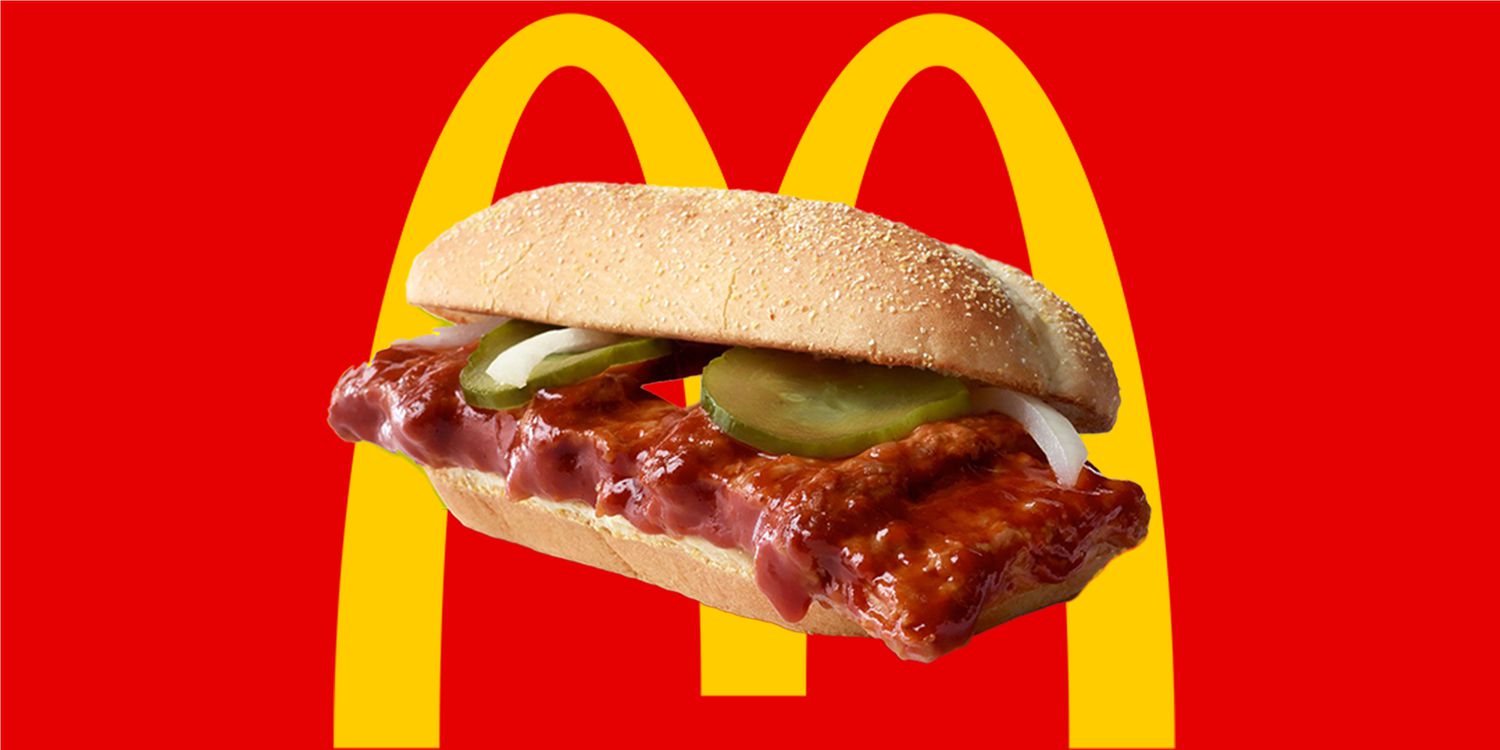The Coral Room’s dedication to English sparkling wine at the Bloomsbury Hotel is partly down to the passion that wine consultant, Ann McHale MW, has for English fizz and why she wanted to make it such a feature of the bar’s wine offer and is very much part of the Coral Room’s ethos.
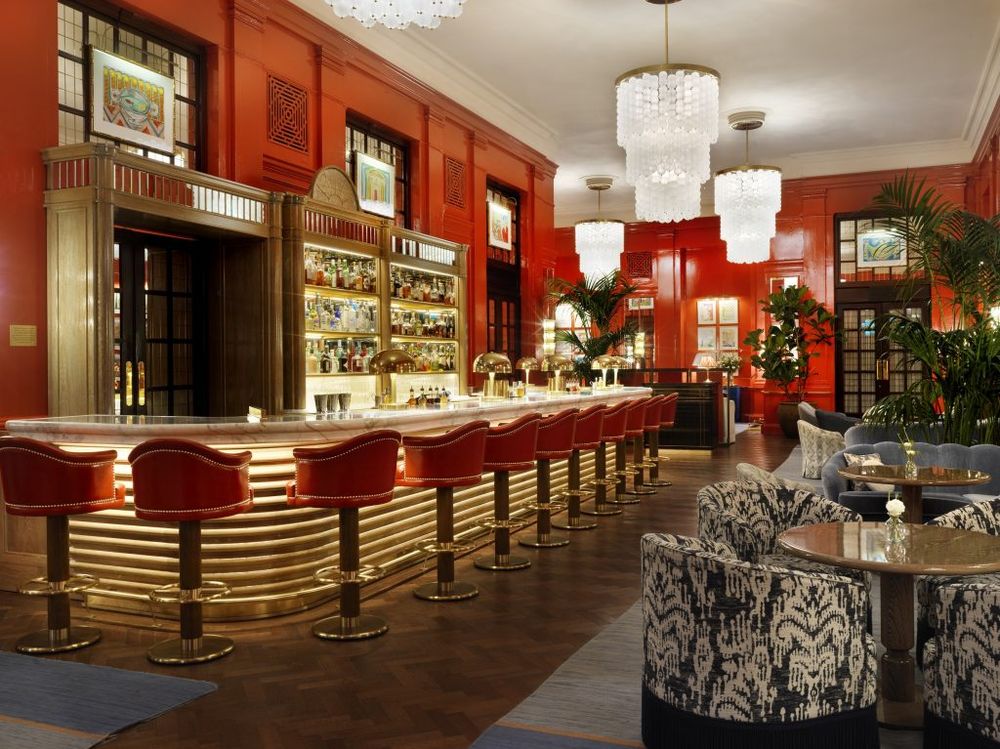
The newly opened Coral Room in the Bloomsbury Hotel, which offers one of the widest selection of English sparkling wines by the glass and bottle
Only a couple of minutes walk away from the hustle and bustle of Tottenham Court Road tube, surely one of the busiest and most congested intersections in London, sits the Bloomsbury Hotel, an oasis of calm in the urban jungle. Step inside the lobby, and the grand Coral Room is, as the name suggests, decked out in a vibrant warm coral lacquer. With its huge lofty ceilings complete with glittering bespoke Murano chandeliers and floor to ceiling windows, the art-deco inspired room is flooded with light, but it wasn’t so long ago that this space was an overly large, draughty lobby.
Opened at the back end of 2017, this grand salon bar has a definite country house transported to the city vibe, complete with the secluded Dalloway Terrace.
Open from 8am daily the Coral Room offers guests somewhere to meet for breakfast, coffee, lunch, afternoon tea or light eats and transforms itself into a buzzing cocktail bar with occasional live music sets come nightfall. It attracts more than its fair share of celebrity clientele, including a smattering of It girls and Instagram influencers, such as Made in Chelsea stars Millie Mackintosh and Hugo Taylor, as well as singer Pixie Lott, former Dr Who and The Crown star Matt Smith, and Queen guitarist Brian May.
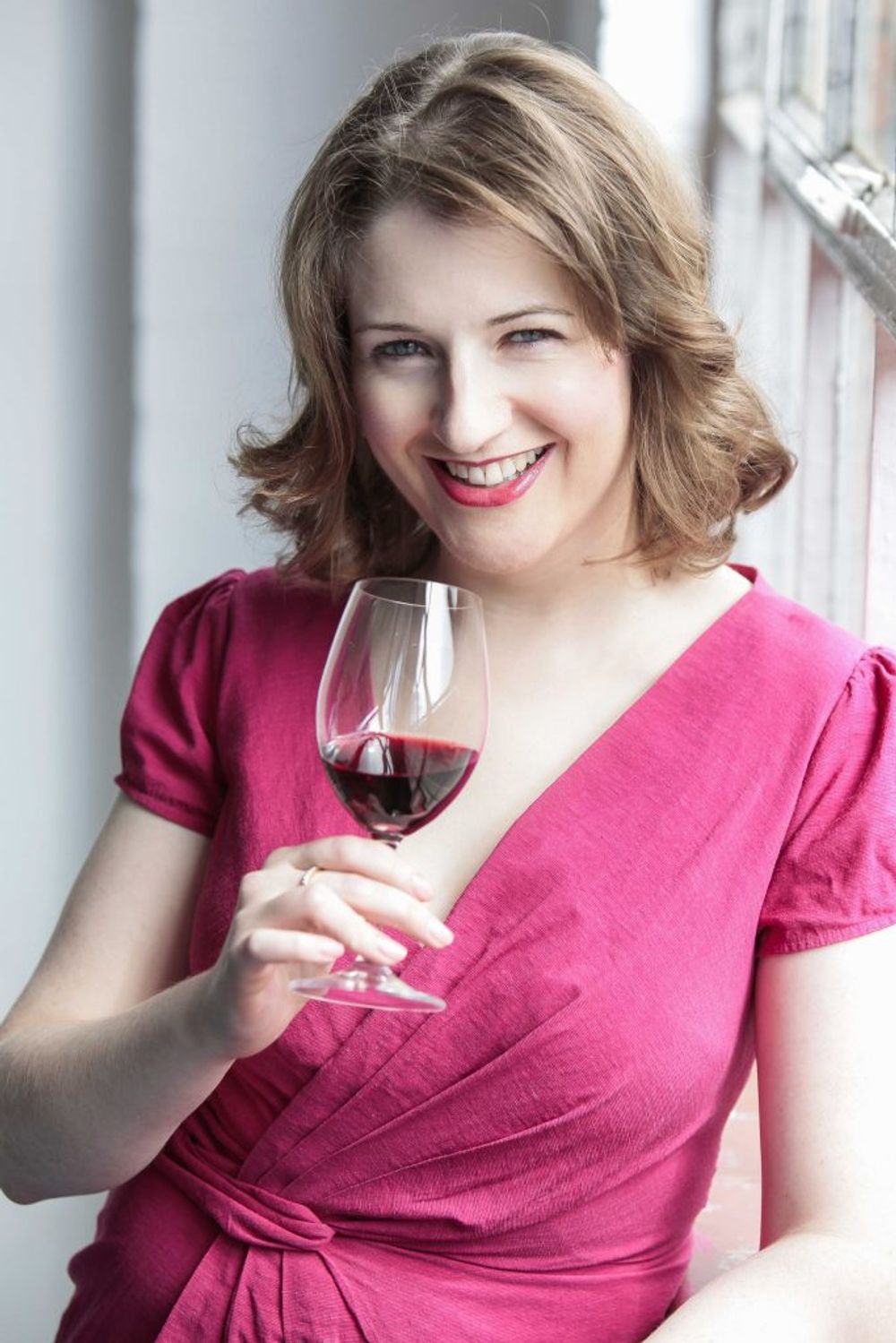
Anne McHale, MW, who has overseen the wine list at the Coral Room, with special focus on English sparkling wines
Ann McHale, MW, has been working closely with the Dublin-based Doyle Collection of hotels for two and a half years, advising on their wine lists in the eight strong boutique hotel group which includes the Bloomsbury in its stable. Other hotels include the Kensington and the Marylebone in London, the Westbury and Croke Park in Dublin and the River Lee in Cork.
While the hotels don’t offer identical wine lists, there is a desire, says McHale to “keep a common wine DNA” running through the London properties, which are very closely situated to each other. “The lists are very similar, though there is some leeway for flexibility,” she says. When McHale, who is from Northern Ireland, was first drafted in to help with the wine, she said her brief was to “unite the ethos of the three London hotels, and premiumise the offering.”
Free rein
Given a largely free rein to amend and change the list as she saw fit, McHale embarked on an enthusiastic buying spree, engaged with a number of English wine producers, and struck up new relationships with small and up and coming vineyards. “For the Coral Room list, I built relationships with a lot of new people,” says McHale. When she took over the reins, the hotel already had a working relationship with Gusbourne, Nyetimber and Ridgeview, whose Bloomsbury sparkling was served with afternoon tea. “I was given carte blanche on the buying front, with the only real limitation being space constraints for storage.”
Now McHale works with a number of distributors including Bibendum and Liberty to source the wines, but also in some cases directly with the producers including Three Choirs, Greyfriars, Black Dog Hill and Albury amongst others.

Hush Heath in Kent, one of the English vineyards being championed by the Coral Room at the Bloomsbury Hotel
The genius stroke is the way the wine list is organised, not by grape or style, but by the counties where the wines are produced. Not surprisingly, the south-eastern English counties of Kent, Sussex and Hampshire, which share the largest concentration of English wine producers, are heavily represented, but there are also wines from Surrey (Greyfriars); Cornwall (Camel valley); Oxfordshire (Brightwell); Essex (Hush Heath); Dorset (Bride Valley); Devon (Lyme Bay Winery); Gloucestershire (Three Choirs) Somerset (Smith & Evans); and as far afield as Worcestershire (Astley).
“Guests get really excited about trying wines from vineyards just down the road from where they live, and I think it’s is a real point of difference,” says McHale, who doesn’t claim credit for the idea herself, but name checks marketing manager Josh Craddock for designing the wine list by county. “I think we’re definitely onto something, and tapping into a growing trend,” says McHale. “The Coral Room is like a country house in the middle of the city and English sparkling wines fit in so well with that ethos.”
Home grown
Increasing consumer awareness and interest in the provenance of their food and drink, as well as the desire to consume locally grown and produced goods is another factor behind the Coral Room’s decision to focus on English sparkling wine, adds Craddock.

Ridgeview’s Bloomsbury is the Coral Room’s popular house pour
The Coral Room now offers 30 different English sparkling wines, with six by the glass which it rotates on a regular basis, all handpicked by McHale. The only permanent fixture on the list is the Ridgeview Bloomsbury, which is the house pour at £12.50 a glass or £65 a bottle. Other selections include Greyfriars Sparkling Rosé Reserve 2014 for £9 by the glass or £50 per bottle; Bolney Bubbly NV for £11.50 by the glass or £60 by the bottle; Gusbourne Estate Brut Rosé at £16.50 a glass/£85 a bottle; Cottonworth Classic Cuvee NV £15 a glass/£75 per bottle; and Black Dog Hill Classic Cuvée 2014 for £13 by the glass or £70 per bottle.
The best selling sparkler at any time, concedes McHale, is generally the most competitively priced (“the Brits love a bargain”) and over the summer, the Coral Room’s best-selling English sparkling wine was Ridgeview Bloomsbury – “no surprise really as it’s the house wine” – closely followed by Chapel Down Rosé which McHale attributes to its strong brand recognition.
Though the Coral Room’s focus is firmly on English sparkling wine, it also lists Perrier Jouët Champagne at £14 a glass or £85 a bottle, as well as a Thompson & Scott Prosecco, on offer for £9 a glass. McHale thinks the latter is a must-have on any list given the ubiquitous Italian sparkler’s popularity.
“Whenever possible the staff are trained to encourage guests to expand their repertoire and try something local,” she says. “We are encouraging people to try English sparkling rather than Prosecco.” To further encourage guests to plump for English sparkling wine McHale says they are considering only offering Prosecco by the bottle in future.
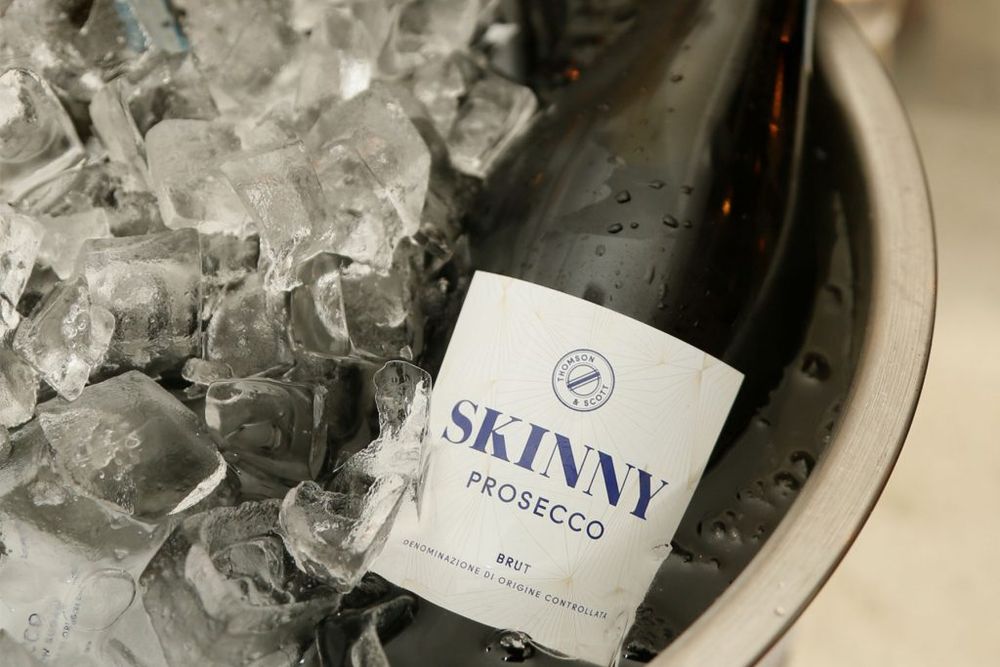
Thompson & Scott’s Prosecco is still a best seller at the Coral Room, despite the emphasis on English sparkling wine
Prosecco: a run for its money
However, Prosecco is still a best seller in volume terms, though Ridgeview Bloomsbury pips it at the post when it comes to value. So what is the enduring appeal of Prosecco? “It comes down to price, the fact that the name is easy to say, and that all the big brands are slightly sweet and not complex. In blind tastings consumers often prefer Prosecco over Champagne.”
With its cheap and cheerful image, McHale says she thinks they might struggle to list a premium Prosecco with a price tag to match. “English sparkling has done the right thing by keeping itself premium and not bowing to pressure to go down market,” she says. This year’s promised bumper harvest might tempt some English producers to drop their prices, but McHale thinks this would be a huge mistake. “English sparkling wine needs to keep its prices high as long as the quality is there,” she says.
Keen to keep the list fresh and ever evolving, McHale says she is always on the lookout for new producers. “I’ve recently been talking to Rathfinny about listing their wines, and while I would love to list everyone and feel passionately about promoting these wines, we are constrained by space. I want this to be a dynamic and evolving list, not just be stuck with the same old names.”
Making the cut

So what criteria does McHale use to determine what wines make the cut and feature on the the Coral Room’s list? “First is the quality of the product,” she says. “and whether I believe it has the right price to quality ratio. I am also keen to hear from producers from counties where we are less well represented. Worcestershire is the furthest county at the moment, but we have a few gaps in there.”
The problem, admits McHale, is not so much sourcing the wines as deciding which to include in the list from an increasingly wide wealth of choice. “As soon as producers know we are championing English wine they are keen to get involved,” she says.
At the moment McHale is focusing exclusively on English sparkling wines, but says in time that the list may expand to include the burgeoning number of Welsh producers. English still wine is another area which she says she is “keen to delve into”, though is wary of “diluting the USP we currently have with the focus on English sparkling”
“There are some great still whites and rosés that I have been really enchanted by,” she says. However, many consumers are dismissive of English wine and can’t believe we can produce good still wine. “But I have tasted some very good ones so watch this space. I think the most successful grape is probably Bacchus, which produces elderberry scented whites, and I prefer them drier in style.”
The increasingly warm weather in England has enabled producers to make more balanced dry styles, she points out, which are more appealing to consumers and are more food friendly. “In the past you needed a bit of sweetness to balance the very high acidity. But climate change has enabled producers to make a more balanced dry white.”
But how clued up about English sparkling wine is the average consumer? McHale concedes there is much work to be done to educate wine drinkers about domestic wines. “I would say that most wine consumers are price and brand led and aren’t really into in wine and where it comes from. But even if you narrow that down to the sub section of those who are more interested in wine, even they aren’t that well informed. People are clearly engaged in wine and food but most had never tasted English wine before so we need to educate and engage with consumers.”

The exceptionally hot summer has led to high hopes amongst English wine producers of a bumper crop this year
As for the future of English wine, McHale says that if the weather continues to be kind in the future – a very big if, given the vagaries of the British weather – then the industry will continue to grow along with consumer awareness.
Another factor threatening to spoil the party is the looming prospect of Brexit, though as McHale points out, if the economy tanks and sends sterling spiralling, then that will certainly help exports. Brexit might also help the domestic market too, where she believes there lies” huge” potential for future growth, as there will be a growing focus on locally produced food and drink. “We are living in uncertain times and all we can do is focus on what’s positive. English wine producers should keep focusing on quality, maintain its premium position and not be tempted to go for quantity over quality. Many of our wines are as good as Champagne, as we have a similar terroir.”
